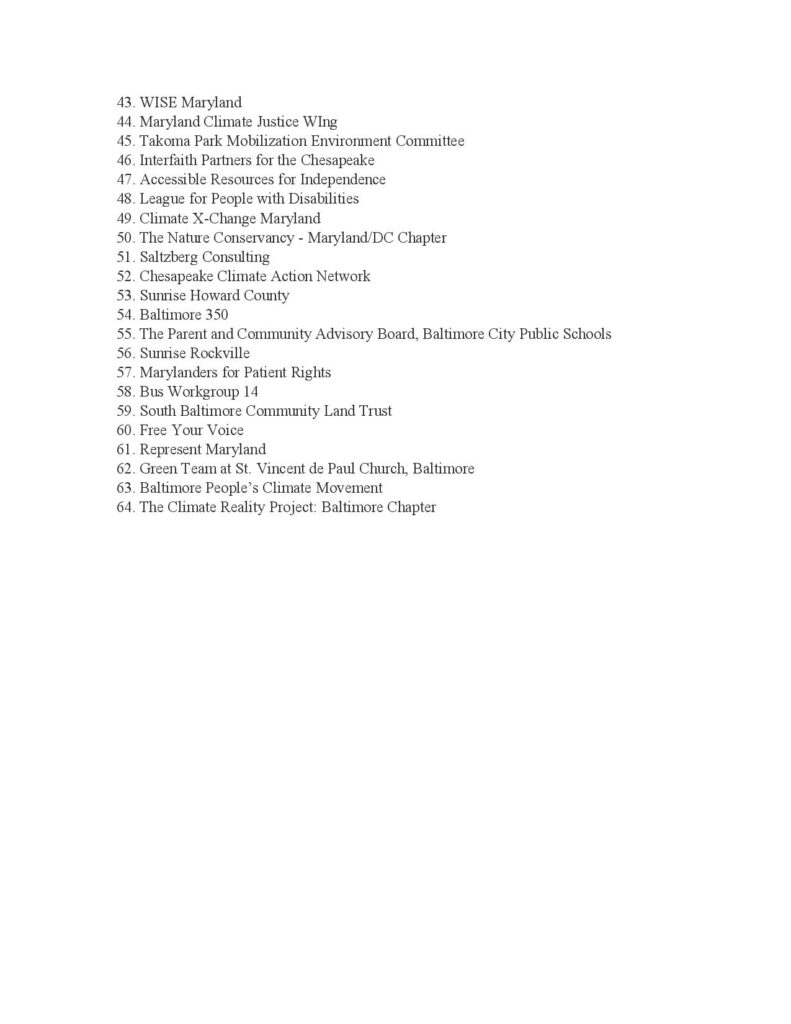

August 12th, 2020
Dear Montgomery Planning Board,
The coalition of organizations and individuals undersigned request additional outreach activities for the upcoming release of the working draft plan of Thrive Montgomery 2050. Many of our organizations have worked with the planning staff and have seen their diligent and innovative ways of conducting outreach during the COVID-19 pandemic. However, community leaders and organizations working with highly impacted communities see an interest and a need to take additional action in order to fully engage all communities. The communities of color that have been the most affected by COVID-19 in our county are the same communities where more Thrive 2050 outreach is needed, and comments are missing.
It is our understanding that the Montgomery Planning Department intends to release the working draft plan of Thrive Montgomery 2050 on September 24th, hold a Planning Board review meeting on October 1st, hold a public hearing on November 19th, and maybe allow the public to submit comments until two weeks after the public hearing.1 We propose the following extensions, recommendations, and additional outreach strategies.
• A working draft in both English and Spanish least 30 days before the November public hearing.
• We ask for a second public hearing that is scheduled 30 to 45 days after the working draft plan has been released in Spanish.
• Create more live multi-bilingual / bilingual outreach opportunities to have bilingual discussions between community members and planners on all sections of the working draft plan.
• Conduct in-person outreach that is safe, outdoors, and physically distant, such as at food distribution centers/ hubs and at parks across the county.
• Create and simultaneously release one-page multilingual informational fact sheets that highlight key sections and points of the working draft plan. Additionally work closely with community organizers to disseminate information and conduct community outreach on the working draft plan.
We appreciate and thank the Planning Board for the opportunity to provide feedback on the working draft plan. We look forward to continuing to be partners in the Thrive 2050 conversation and find new and innovative ways to conduct outreach.
1 Thrive 2050 Public Comment Timeline. (Last Updated on August 4th, 2020). Available from: https://montgomeryplanning.org/planning/master-plan-list/general-plans/thrive-montgomery-2050/
Sincerely,
Denisse Guitarra
Maryland Conservation Advocate
Audubon Naturalist Society
July 27, 2020
The Honorable Sidney Katz
Montgomery County Council
100 Maryland Avenue
Rockville, MD 20850
Re: Property Taxes
Dear Council President Katz and Councilmembers:
Thank you for the opportunity to provide comments on the proposals to alter the rules for property tax increases. Please accept these comments on behalf of the Coalition for Smarter Growth, the leading organization in the DC region advocating for walkable, inclusive, transit-oriented communities.
We support a fix to the artificial constraints imposed by the current property tax cap, and want to ensure that the Council and County Executive have the authority to budget in a way that meets the community’s needs, particularly for social services, affordable housing, and public transportation. The county requires improved flexibility to meet unexpected challenges, such as the COVID-19 pandemic and all of the increased need it has created.
At the same time as needs rise, Montgomery County has not been able to benefit from growth in the tax base, growth which is supported by a history of successful public investments in infrastructure, schools, and transportation. Continuous public investment and services are vital in order to maintain a high quality of life, spur further economic development, and battle external threats, including public health and climate crises.
Therefore, we support proposals to remove the property tax cap and to require a supermajority of at least two-thirds of the council to raise the general property tax rate, not a unanimous vote as is now the case. We also support setting equal limits on rate increases for owner-occupied residential properties and for residential rental properties, since landlords pass property tax increases onto tenants in the form of higher rents. Homeowners and renters should be treated equally – renters should not face a higher pass-through cost of tax increases than homeowners.
Thank you for your consideration.
Sincerely,
Jane Lyons
Maryland Advocacy Manager
Coalition for Smarter Growth
CC: Montgomery County Councilmembers County Executive Marc Elrich
Thank you for supporting our wins in 2025! Donate to CSG to help us tackle the year ahead!